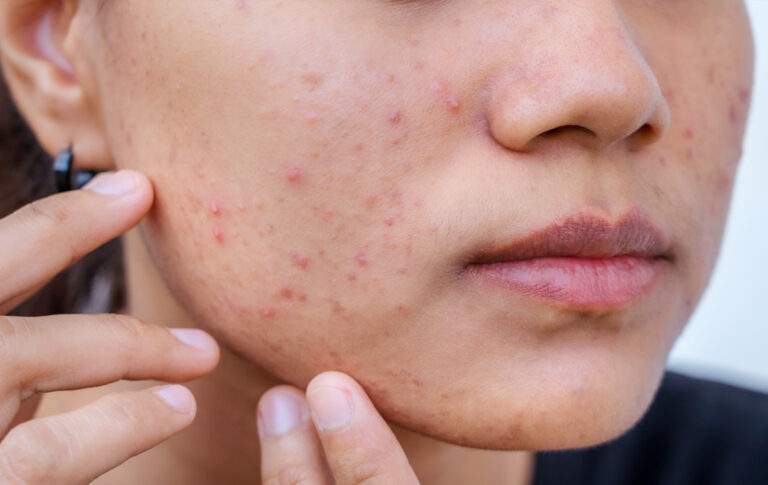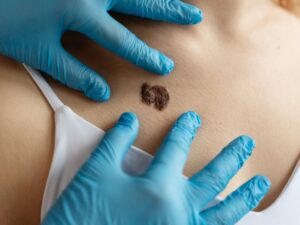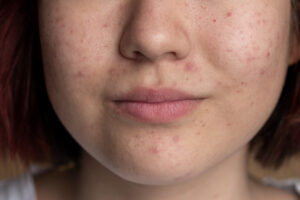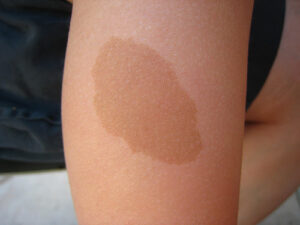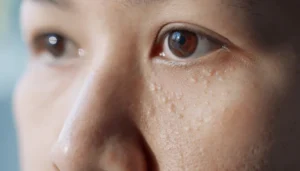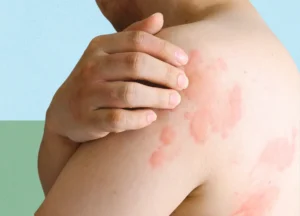Did you know? Skin is the largest organ in your body. Yet, we often neglect concerns related to skin, hoping the small bumps will wear off on their own. Since Skin is the part of our body most exposed to daily environmental stress, it may need extra care. From the tropical humidity of Singapore to the hours we spend in air-conditioned spaces, our skin faces a number of challenges. While some skin issues are temporary and mild, others can be persistent and may require professional attention.
Recognising early signs and knowing how to manage them can make a huge difference to your skin’s health and confidence. Here’s a guide to the most common skin conditions and what you can do about them.
1. Acne
Acne is one of the most common skin conditions, affecting teens and adults in similar ways. It appears as blackheads, whiteheads, pimples, or cysts, often on the face, chest, and back. Factors include excess oil production, clogged pores, and hormonal changes. Mild acne can often be managed with gentle cleansers and over-the-counter products containing salicylic acid or benzoyl peroxide, but persistent cases should be assessed by a dermatologist.
2. Eczema (Atopic Dermatitis)
Eczema causes dry, itchy, inflamed skin and is common in both children and adults. Flare-ups can be triggered by allergens, stress, and temperature changes. Moisturising regularly, avoiding known irritants, and using prescribed topical creams can help manage symptoms.
3. Psoriasis
This chronic condition leads to thickened, scaly patches on the skin due to an overactive immune system. It can appear on the elbows, knees, scalp, and other areas. While there’s no cure, treatments like medicated creams, light therapy, and oral medication can help control outbreaks.
4. Rosacea
Rosacea causes facial redness, visible blood vessels, and sometimes acne-like bumps. Triggers include spicy food, alcohol, sun exposure, and stress. Gentle skincare, sunscreen, and medical treatments can reduce flare-ups.
5. Hives (Urticaria)
These red, itchy welts can appear suddenly due to allergic reactions, stress, or infections. Antihistamines usually help, but chronic hives may need further investigation to identify underlying causes.
6. Fungal Infections
Conditions like athlete’s foot, ringworm, and yeast infections thrive in Singapore’s warm, humid climate. Symptoms include redness, peeling skin, and itching. Antifungal creams or oral medication are usually effective, along with good hygiene and keeping skin dry.
7. Vitiligo
Vitiligo causes patches of skin to lose pigment due to the destruction of melanin-producing cells. While it’s not harmful, it can be emotionally challenging. Management options include light therapy, topical treatments, and cosmetic camouflage.
8. Contact Dermatitis
This is a reaction to irritants or allergens, leading to redness, swelling, and itching. Identifying and avoiding triggers is key, alongside soothing creams to calm inflammation.
9. Cold Sores
Caused by the herpes simplex virus, cold sores are fluid-filled blisters around the mouth. They can be triggered by stress, illness, or sun exposure. Antiviral creams or tablets can help reduce the duration and severity.
10. Warts
Warts are caused by certain strains of the human papillomavirus (HPV). They can appear anywhere on the body and are often harmless but contagious. Over-the-counter remedies or professional removal are common treatments.
When To See A Doctor
Healthy skin isn’t just about appearance; it’s an essential part of your overall well-being. If you notice persistent changes or discomfort, consulting a qualified dermatologist in Singapore can help you receive timely, effective care tailored to your needs. Don’t wait for small issues to escalate; take charge of your skin health today.
Restore your skin’s health and confidence. Book a visit with About Dermatology today for detailed diagnosis and tailored treatments that truly address your skin’s unique needs.

